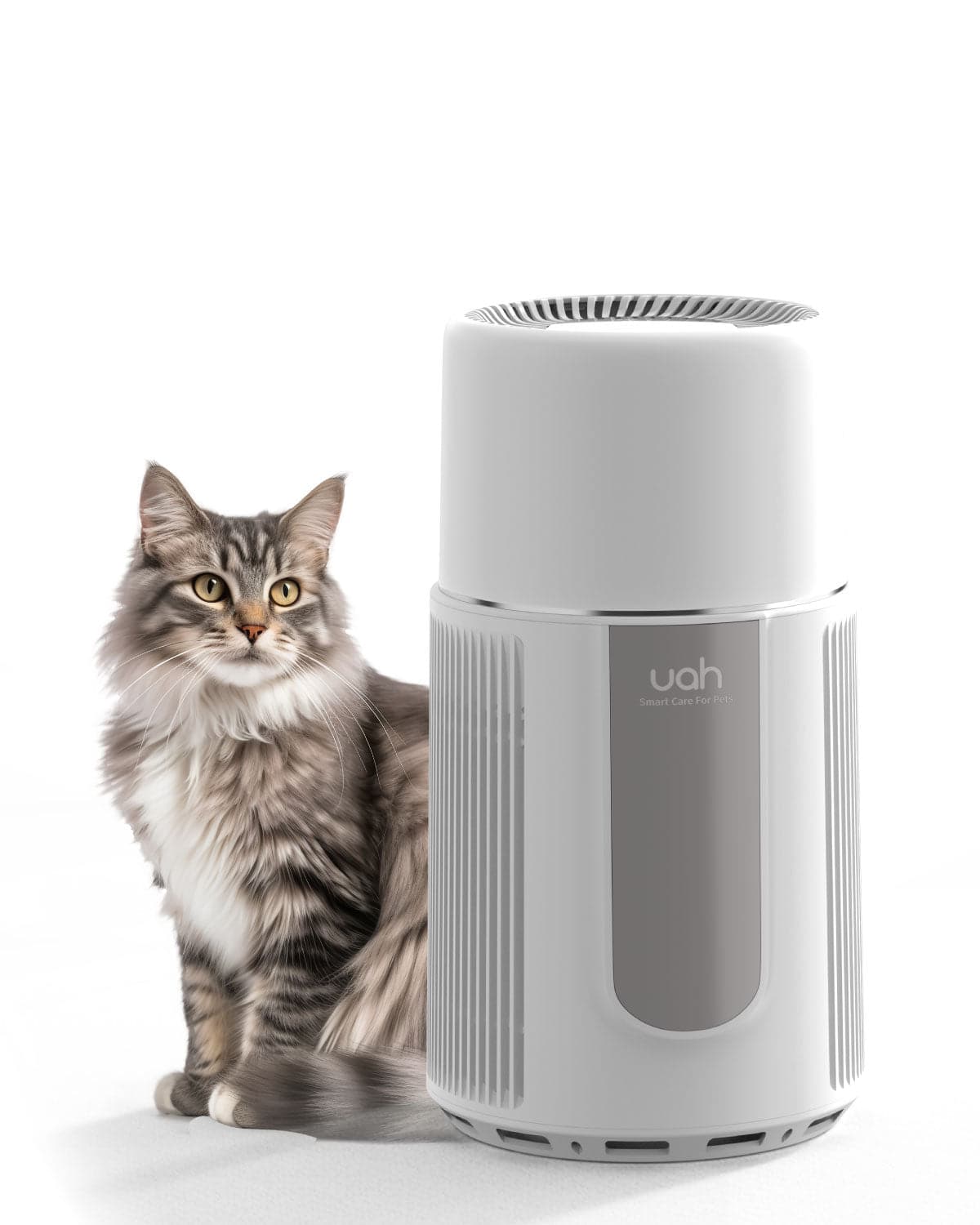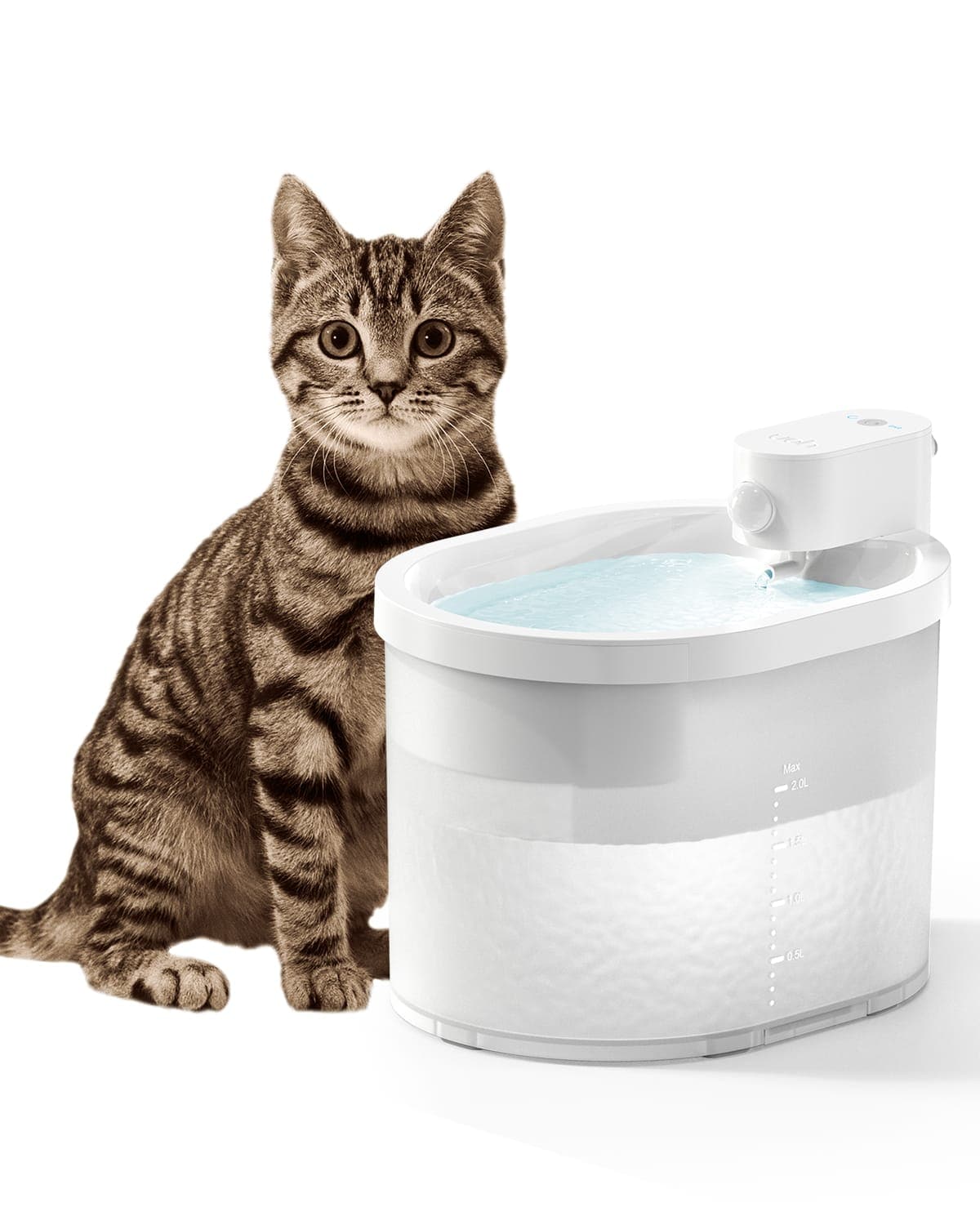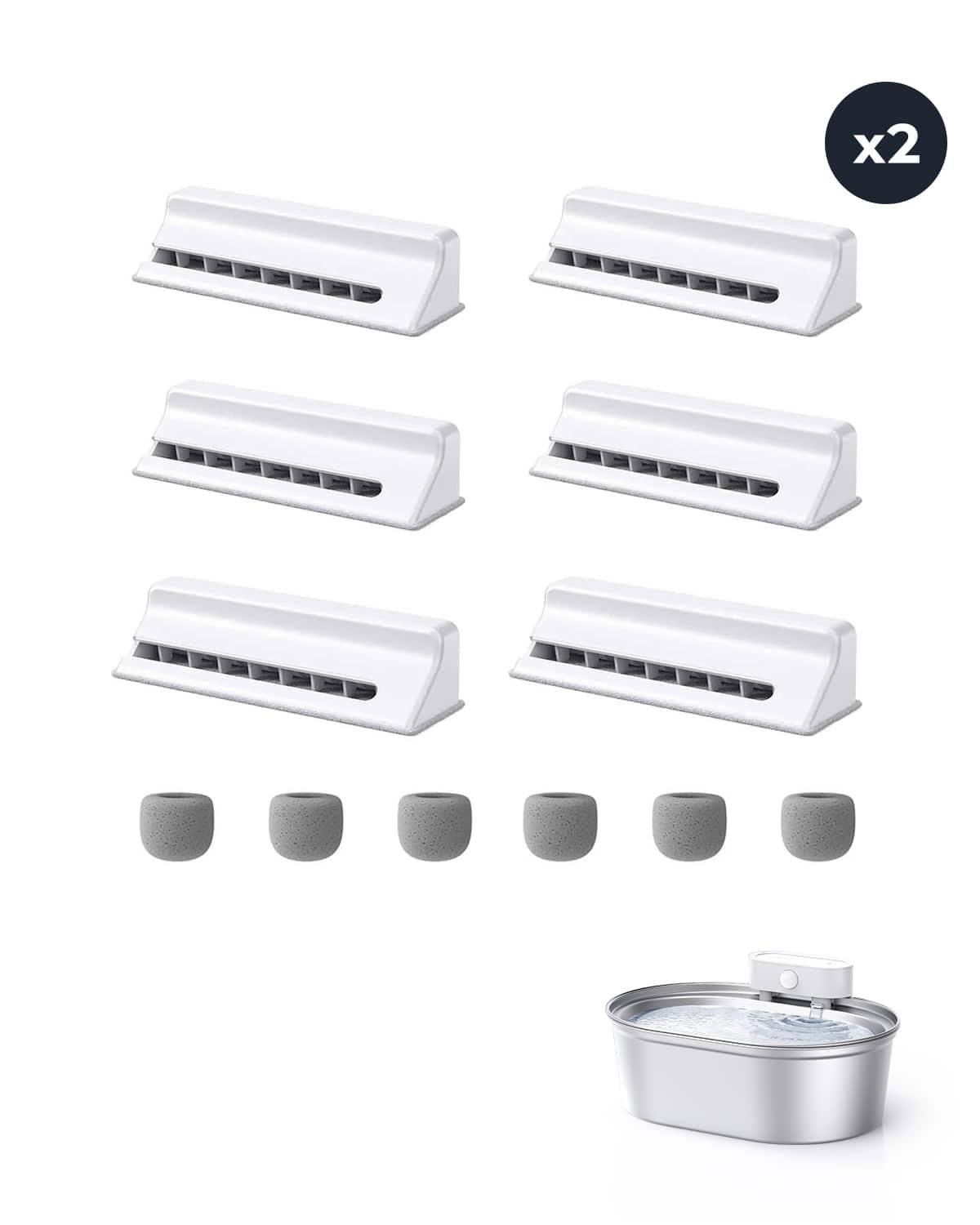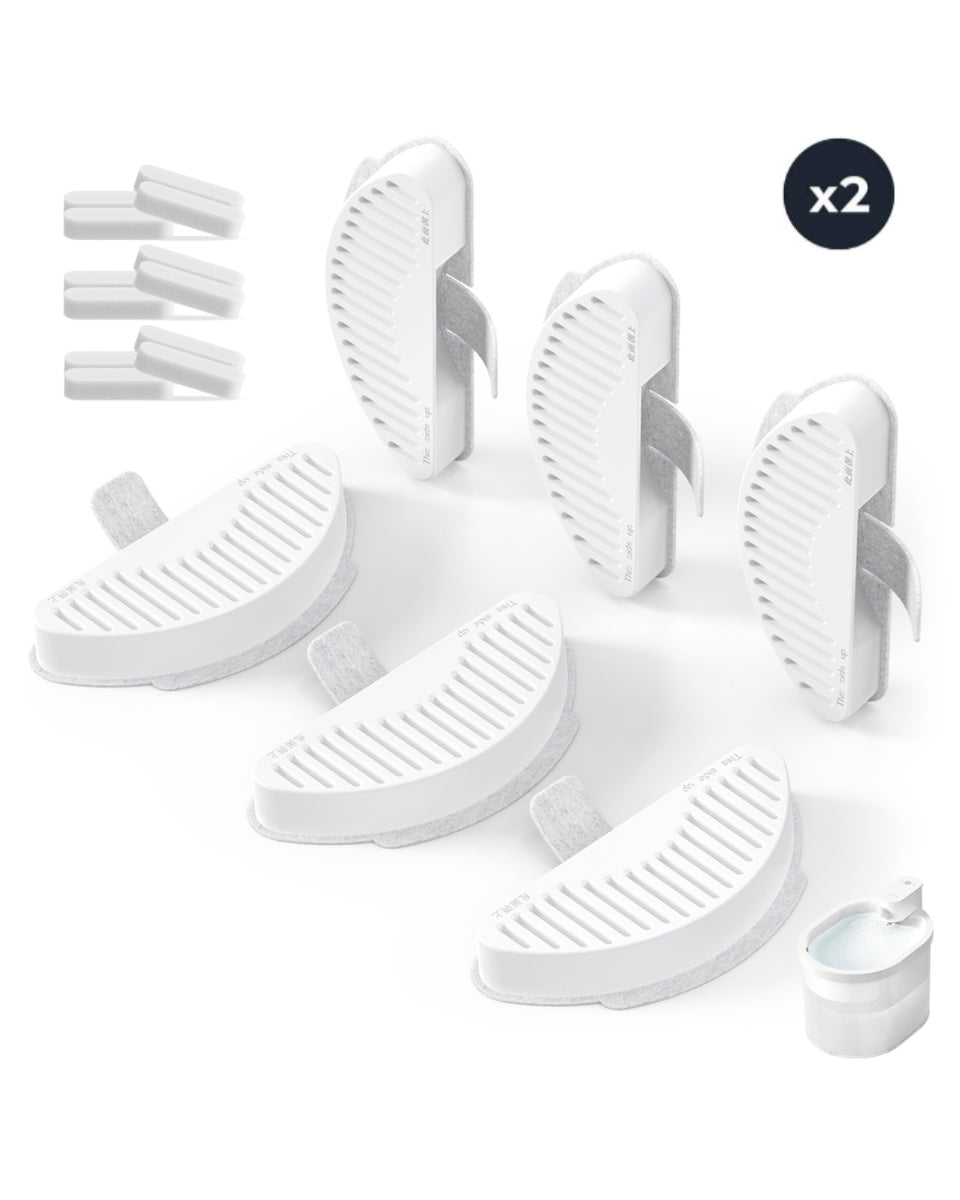Stainless Steel, Ceramic, or Plastic Cat Water Fountain: Which is the Best?
|
|
Time to read 7 min

UAHPET Stainless Steel Self-Cleaning Cat Litter Box

UAHPET 2025 Upgrade Visible Stainless Steel Cat Water Fountain Pro

Uah Pet Air Purifier

Uah Pet ZERO Wireless And Automatic Cat Water Fountain

12 pcs Replacement Filter for Stainless Steel Wireless Pet Water Fountain

12 pcs Uah Pet Replacement Filter for ZERO Cat Water Fountain
|
|
Time to read 7 min
Cats are fascinating creatures with unique needs, and as responsible pet owners, we always strive to provide them with the best care possible. One often overlooked aspect of a cat's well-being is hydration. Cats are notorious for being finicky about their water sources, which is where cat water fountains come into play.
In previous articles, we talked about how to choose the best cat water fountain for cats, including the factors we should take into consideration. But with so many options available, how do you decide between stainless steel, ceramic, or plastic cat water fountains?
In this article, we'll dive deep into each material's pros and cons, helping you make an informed decision for your beloved feline companion.
It's no secret that water is essential for a cat's health. Adequate hydration supports their kidney function, aids digestion, and keeps their skin and coat in top condition. While traditional water bowls have been the norm, cat water fountains are gaining popularity due to their numerous advantages. Not only do they keep water fresh and enticing, but they also cater to a cat's natural instincts.
Encouraging Hydration
Cats have a notorious reputation for not drinking enough water, often leading to urinary tract issues. A cat water fountain's flowing water mimics a natural stream, attracting cats and encouraging them to drink more. This is especially beneficial for cats on a dry kibble diet, as increased water intake can help prevent urinary blockages.
Mimicking Natural Instincts
In the wild, cats prefer drinking from moving water sources to minimize the risk of contamination. A cat water fountain taps into this primal instinct, providing your cat with a constant flow of fresh water. This can be particularly helpful if your cat is sensitive to chlorine or other chemicals commonly found in tap water.

The Advantages
Stainless steel cat water fountains are known for their durability and resistance to bacterial growth. The non-porous surface of stainless steel inhibits the growth of harmful microorganisms, ensuring that your cat's water remains clean and safe to drink. Additionally, stainless steel fountains are easy to clean, which is essential for maintaining your cat's health.
Stainless steel cat water fountains are ideal for cat owners who prioritize their pets' health and hygiene. With their durability, antibacterial properties, and ease of cleaning, these fountains are perfect for households with multiple cats or those looking to minimize maintenance. They ensure your cat always has access to clean, safe drinking water, making them a great long-term solution.Considerations to Keep in Mind
However, stainless steel fountains can be noisy due to water hitting the metal surface. If your cat is skittish or easily startled, this noise might initially deter them from using the fountain. To mitigate this, consider placing the fountain in a quiet corner of your home.

The Advantages
Ceramic fountains are praised for their aesthetic appeal and variety of designs. If you're someone who values both functionality and decor, a ceramic fountain can be an excellent choice. The weight of ceramic fountains also prevents cats from easily tipping them over, making them a suitable option for playful kitties.
Ceramic cat water fountains are perfect for pet owners who appreciate a blend of style and functionality. With their aesthetic designs, these fountains not only provide fresh water but also enhance the decor of your home. The sturdy weight of ceramic fountains ensures they remain upright, making them an ideal choice for households with playful or active cats.Considerations to Keep in Mind

The Advantages
Plastic fountains are often the most budget-friendly option. They are lightweight and come in various sizes and shapes, making them suitable for small spaces. Plastic fountains are also less likely to cause noise disruptions, which can be a concern for some cat owners. Meanwhile, they are also easy to clean.
Plastic cat water fountains are a great choice for cat owners on a budget. They are lightweight, versatile, and perfect for small spaces, especially in apartments or other tight quarters.Considerations to Keep in Mind
Plastic can develop scratches over time, creating ideal spots for bacteria to accumulate. Some cats may also develop allergies to certain plastics.
So it's crucial to choose a BPA-free and has water fountain filter option. Regular cleaning is particularly important with plastic fountains to maintain water quality.

Durability
Stainless steel fountains lead in terms of durability, with plastic following closely behind. Ceramic fountains, while beautiful, might need more frequent replacements since they are easy to be broken. If you're looking for a long-term investment, stainless steel or plastic is the way to go.
Safety
Ceramic and stainless steel are considered safer options as they are less likely to leach harmful chemicals into the water. Plastic fountains should be chosen carefully to ensure they are BPA-free and made from food-grade materials. Prioritizing your cat's health and safety is paramount.
Ease of Cleaning
They are all easy to clean. Stainless steel and ceramic fountains are dishwasher-safe, while plastic fountains are not. However, stainless and ceramic fountains require gentle cleaning to prevent scratches. Consider your cleaning routine and preferences when deciding on a material that aligns with your lifestyle.
Aesthetic Appeal
Ceramic fountains win in this category, offering a range of artistic designs that can complement your home decor. Stainless steel fountains have a modern appeal, fitting well in contemporary settings. Plastic fountains, while less visually striking, can be practical choices for cat owners prioritizing functionality since you can easily notice the water in the fountain to see if you need to add water for your cats.
Your Cat's Preferences
Observe your cat's behavior – do they prefer drinking from a flowing stream or a still bowl? Their preference can guide your choice. Some cats might take to a fountain immediately, while others might need a gradual introduction to the new water source.
Your Lifestyle
Consider how much time you can dedicate to cleaning and maintenance. Stainless steel and ceramic fountains might require less frequent attention due to their heat resistance if you have a dishwasher. If you have a busy schedule, stainless and plastic options could be more suitable, since they are not easy to be broken.
Budget Considerations
While stainless steel and ceramic options tend to be pricier initially, they offer greater longevity and may save you money in the long run if you are conscious enough to avoid broking ceramic water fountains. Plastic fountains are a budget-friendly option, but they may require more frequent replacements such as filters during the use period to make sure the water is fresh and clean.
Regular Cleaning Routine
Regardless of the material, clean your cat's water fountain regularly to prevent the buildup of bacteria and debris. Follow the manufacturer's guidelines for cleaning frequency and methods. Regular maintenance ensures that your cat always has access to clean and fresh water.
Filter Replacements
If your fountain uses filters, replace them according to the manufacturer's recommendations. Filters play a crucial role in maintaining water quality by trapping impurities. Keeping the filter system functional guarantees your cat's health and enjoyment.
Unusual Noises
If your fountain is making strange noises, it might be due to trapped air. Consult the user manual to release air pockets from the system. Regularly checking for air pockets and addressing them promptly can help ensure the fountain operates quietly.
Decreased Water Flow
A decrease in water flow could indicate a clogged pump or dirty filter. Regularly inspect and clean these components to restore proper water circulation. Maintaining the water flow not only encourages your cat to drink but also prevents potential waterborne illnesses.
Repurposing Materials
For the creatively inclined, making a DIY cat water fountain can be a fun project. Repurpose materials like ceramic or glass bowls to create a personalized fountain. This approach is not only cost-effective but also environmentally friendly.
Customizing the Design
When designing your DIY fountain, consider incorporating decorative elements that match your home's aesthetic. Just ensure that the materials you use are safe for your cat to come into contact with. Customizing the fountain can make it a unique and charming addition to your living space.
Ultimately, the choice between stainless steel, ceramic, or plastic cat water fountains boils down to your cat's preferences, your lifestyle, and your budget. Each material has its own set of benefits and considerations, and understanding these can help you make an informed decision that ensures your cat stays hydrated and healthy. Remember, a well-hydrated cat is a happy cat!
Thank you for reading here far! UahPet is seeking lovely pet stories right now, email (support@uahpet.com) and share your pet stories with us to get 30% off!
For every purchase made at Uahpet, we will contribute $1 towards our donation efforts to support rescued pets. At the end of the month, we will calculate the total order numbers and donate products of equal value to that amount.
If you would like to keep up on the latest stories of Uahpet Giving, follow us on social media. Our total donation will be updated at the end of January.
Thanks for your support. Together we'll witness how those small acts of human kindness turn into something big. Click here to see the impact we've made together.